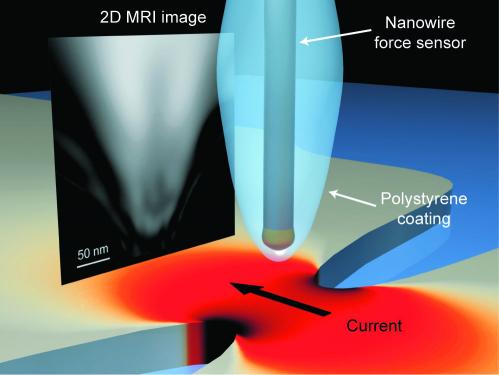Nanoscale MRI Imaging Comes into Focus
October 1, 2013
|
The new imaging technique offers 10-nm spatial resolution. |
Researchers across the world have been working on developing MRI imaging functionality with radically improved resolution. Earlier this year, there was an announcement of an imaging modality a million time sharper than MRI. Following that was an announcement of a breakthrough using hyperpolarized diamond nuclei th that could be used to dramatically boost MRI's resolution. More recently, researchers at Northwestern and the University of Illinois at Urbana-Champaign have announced a new strategy that offers a 10-nm spatial resolution. Current-generation MRI scanners provide a resolution measured in millimeters.
In what is termed an "experimental paper," the scientists explain the new spin-manipulation method that could be used to boost the resolution of MRI as well as spectroscopy. In a summary, they describe "a novel spin-manipulation protocol that encodes temporal correlations in the statistical polarization of nuclear spins in the sample by periodically applying radio-frequency magnetic field pulses." Strong magnetic field pulses are created by focusing current through a nanoscale metal constriction.
In their study, the researchers detail how they used a silicon nanowire mechanical oscillator as a magnetic resonance sensor to detect the 1H spins in a polystyrene sample
"Our approach brings MRI one step closer in its eventual progress toward atomic-scale imaging," says Raffi Budakian, PhD, the lead researcher and professor at University of Illinois. Budakian is also working to develop a magnetic resonance force microscopy, a new modality that blends the precision of scanning probe microscopy with the 3-D imaging functionality of MRI. According to Budakian, the new MRI modality would be compatible with standard MRI scanning technologies.
It is compatible with and can be incorporated into existing conventional MRI technologies.
About the Author(s)
You May Also Like


.png?width=300&auto=webp&quality=80&disable=upscale)
